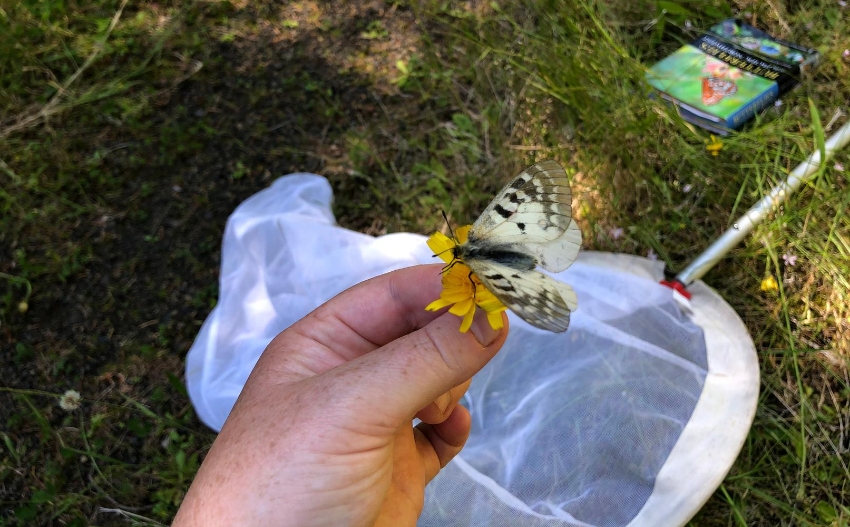
If you’ve looked at the list of flora and fauna found in the proposed Rainforest Reserve (linked at the bottom of the project’s biodiversity page ), you might have noticed that it’s a little lopsided: the only invertebrates listed are a bunch of butterflies and a single dragonfly species. There’s a simple explanation. It’s not that butterflies are the only insects in the Reserve. It’s just that no one has done a proper survey of insects on the high peaks here—no one, that is, except butterfly expert Mike Patterson.
With that in mind, NCLC Stewardship Director Melissa Reich and her friend Michele Blackburn spent a day in mid-July in the proposed Reserve seeing what they could see. Melissa and Michele have been friends for a decade, since they worked together for The Nature Conservancy on the Oregon Coast. Michele now serves as the endangered species conservation biologist for the Xerces Society for Invertebrate Conservation, an international organization headquartered in Portland.

Michele checks out a Parnassius clodius, a high-altitude swallowtail butterfly.
Melissa knows her way around the proposed Reserve, and Michele knows how to catch, identify, and release insects. She brought her large dragonfly net, her smaller bumblebee net, her vials, and her cooler, and the pair headed to the peaks. The no-harm technique Michele uses to ID bees: catch the bee in a net; put it in a vial; place it in a cooler, causing it to fall asleep; photograph it; then wait for it to awaken and fly away.

The main discovery of the day was that they need to return next year a month earlier. Melissa is eager to learn more about the pollinators associated with the flowering native plants in the Reserve, but many of those plants had already finished blooming, which may be one reason they didn’t see many bumblebees. Those they did see were visiting the (non-native) daisies and hairy cat’s ear, or false dandelion (Hypochaeris radicata) lining the roadsides.
Learn how you can help conserve the Rainforest Reserve.
Comments